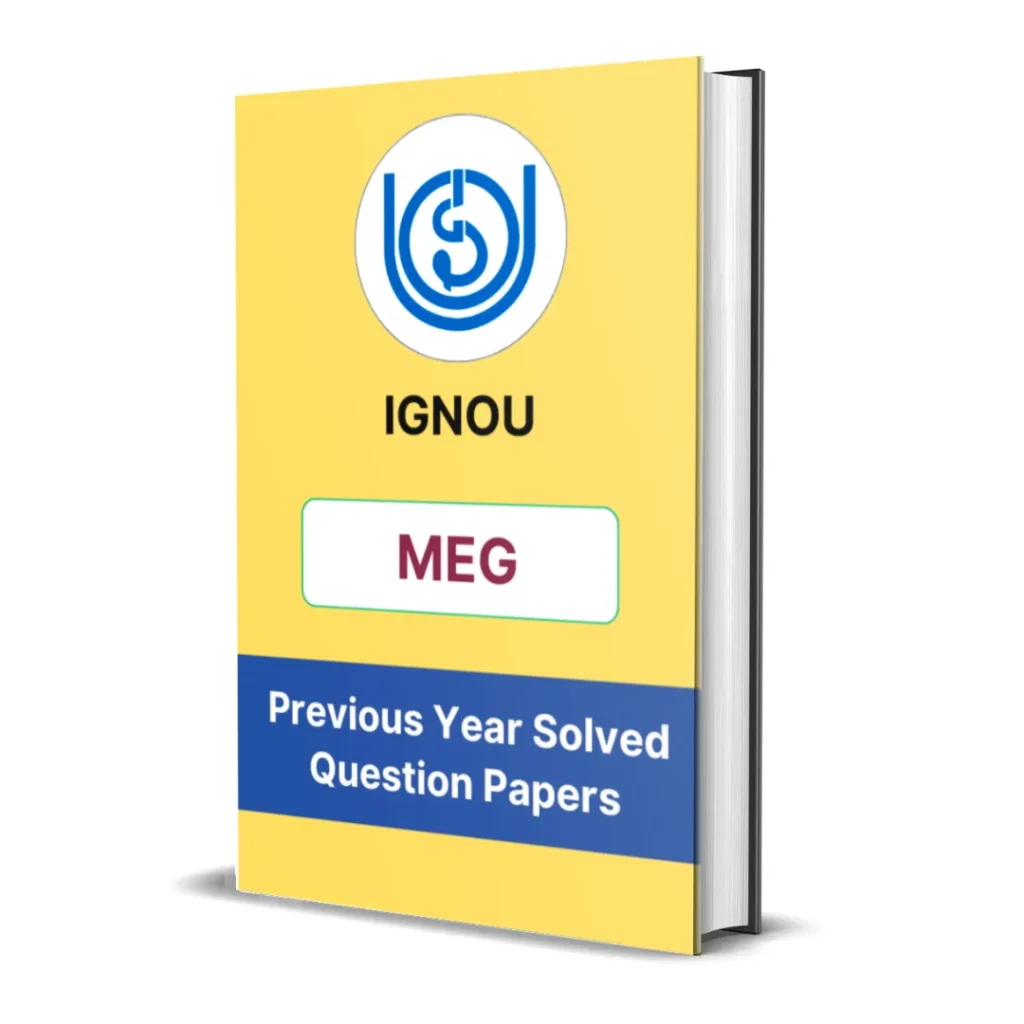MEG-16 Block 6 Summary | Folk in Contemporary Indian Fiction
- Last Updated On October 20, 2025
Table of Contents
Here you will get the detailed summary of IGNOU MEG 16 Block 6 – Folk in Contemporary Indian Fiction.
We have provided the summary of all units starting from unit 1 to unit 6.

Unit 1 – Pather Panchali by Bibhuti Bhushan Bandopadhyay
Unit 1 of IGNOU MEG-16 Block 6 focuses on Bibhuti Bhushan Bandopadhyay’s Pather Panchali, a landmark Bengali novel that captures the essence of rural Bengal and its deep-rooted folk traditions. The unit explores how Bandopadhyay intertwines folk sensibility, nature, and realism to depict the struggles and innocence of a poor Brahmin family, particularly through the experiences of the children, Apu and Durga.
The novel’s narrative reflects the rhythm of rural life—its festivals, songs, beliefs, and emotional intensity—mirroring the community’s collective consciousness. Folk traditions enrich the story with poetic simplicity, turning everyday hardships into profound reflections on life and resilience. The unit emphasizes how Pather Panchali bridges folk imagination and modern realism, transforming village life into a universal tale of humanity and endurance.

Unit 2 – The Folk Culture of Odisha: Gopinath Mohanty’s Paraja
Unit 2 of IGNOU MEG-16 Block 6 focuses on Gopinath Mohanty’s Paraja, a novel that vividly portrays the life, customs, and beliefs of the Paraja tribe in Odisha. The unit examines how Mohanty uses folk idioms, myths, and oral rhythms to depict the tribe’s harmonious relationship with nature and their struggles against social and economic oppression.
Through the story of Sukru Jani and his family, the novel becomes a powerful narrative of cultural survival and resistance. Folk traditions—songs, rituals, and community gatherings—form the emotional and spiritual fabric of the story. The unit highlights how Paraja preserves tribal consciousness within the framework of modern fiction, showcasing folklore as a source of identity, resilience, and moral vision in the face of change.

Unit 3 – Maila Anchal by Phanishwar Nath Renu
Unit 3 of IGNOU MEG-16 Block 6 focuses on Phanishwar Nath Renu’s Maila Anchal, a celebrated Hindi novel that brings the folk life and linguistic richness of rural Bihar into mainstream literature. The unit explores how Renu captures the humor, dialects, songs, and rituals of common villagers, creating an authentic depiction of post-independence rural India.
The novel reflects the contradictions of village life—poverty and dignity, superstition and faith, despair and hope—through a tapestry of local voices. Its folk tone and anchalik (regional) realism establish a deep connection between literature and the lived experience of the people. The unit emphasizes how Maila Anchal represents a fusion of folk art and social realism, celebrating the endurance and humanity of India’s rural heartland.
Unit 4 – The Dilemma by Vijaydan Detha
Unit 4 of IGNOU MEG-16 Block 6 focuses on Vijaydan Detha’s The Dilemma, a retelling of Rajasthani folktales that blends traditional storytelling with psychological and philosophical insight. The unit explores how Detha reinterprets oral tales to examine moral choices, social constraints, and human desires within a folk framework.
Known for his innovative adaptations of oral narratives, Detha transforms folk motifs into stories that challenge patriarchy, caste, and hypocrisy while maintaining the simplicity and charm of village storytelling. In The Dilemma, he explores the conflict between duty and emotion, reflecting universal moral dilemmas through a folk lens. The unit emphasizes that Detha’s work represents the continuity of folklore in modern literature, where traditional wisdom acquires new relevance and power.

Unit 5 – Chemmeen by Thakazhi Sivasankara Pillai
Unit 5 of IGNOU MEG-16 Block 6 focuses on Thakazhi Sivasankara Pillai’s Chemmeen, a Malayalam novel that intricately weaves folk beliefs, sea mythology, and social realism. The unit examines how the story of Karuthamma and Pareekutty reflects the moral and emotional world of a coastal fishing community in Kerala.
Rooted in the local legend that the sea goddess protects only the faithful wife of a fisherman, the novel turns folk belief into a symbol of love, fate, and moral consequence. Through vivid descriptions, songs, and cultural customs, Pillai creates a lyrical yet tragic portrayal of human desire and faith. The unit highlights how Chemmeen embodies the poetic realism of folk culture, turning regional myth into a universal exploration of love, sin, and redemption.
Unit 6 – Kanthapura by Raja Rao
Unit 6 of IGNOU MEG-16 Block 6 focuses on Raja Rao’s Kanthapura, a pioneering Indian-English novel that combines Gandhian ideals with the oral storytelling tradition of South India. The unit examines how the narrative, told by an elderly village woman, imitates the tone and rhythm of folk storytelling, blending myth with political awakening.
The novel depicts how the message of Mahatma Gandhi transforms a small village into a site of spiritual and social revolution. By using myths, legends, and folk idioms, Raja Rao fuses the sacred with the political, presenting the freedom struggle as a modern epic of moral regeneration. The unit highlights how Kanthapura exemplifies the synthesis of folk narrative and nationalist consciousness, showcasing how oral traditions can articulate profound philosophical and historical ideas in modern fiction.